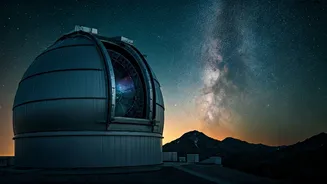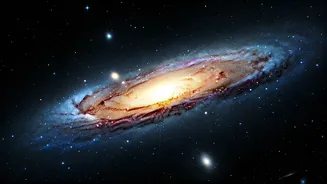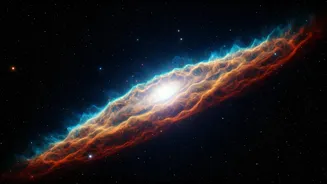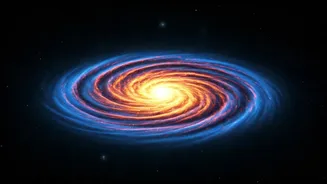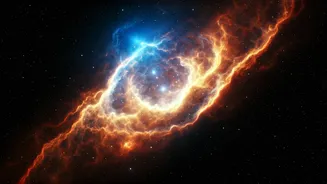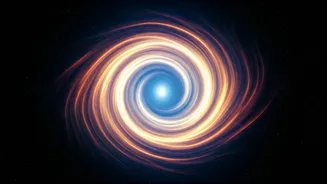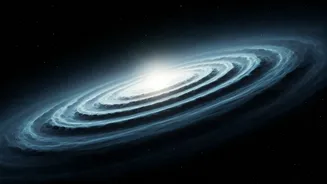Milky Way's Portrait
The James Webb Space Telescope recently captured the most detailed infrared map of our Milky Way. This incredible feat of technology provides an unprecedented
look at our galactic home. This achievement is a giant leap in the ongoing endeavor to understand the structure and evolution of the Milky Way, allowing astronomers to see through cosmic dust and observe the galaxy in unparalleled detail. The resulting images and data promise to significantly enhance our knowledge of star formation, the distribution of matter, and the overall dynamics within our galactic neighborhood. This work not only enhances our ability to explore the galaxy but also sets a new standard for astronomical observation.
Comet's Radio Signals
Astronomers successfully captured radio signals emanating from comet 12P/Pons-Brooks. This discovery offers a new way to study the behavior and composition of comets, which can provide invaluable information about the early solar system. By analyzing the radio signals, researchers can glean insights into the comet's activity, including the release of gas and dust. This method allows them to remotely probe the comet's physical and chemical characteristics. This novel approach further augments our comprehension of cometary phenomena and their impact on the evolution of celestial bodies. Furthermore, these radio observations could help us piece together the formation of our solar system.
Elusive Solar Waves
Scientists have identified elusive solar waves, which may be responsible for powering the sun's corona. This discovery is a significant step in solving a long-standing mystery regarding the extreme heat of the sun's outer atmosphere. These waves, which are difficult to detect, could explain why the corona is far hotter than the sun's surface. Understanding the mechanisms behind these solar waves could lead to significant advancements in solar physics. This research not only helps explain solar behavior but could also improve space weather predictions, which are crucial for protecting satellites and technological infrastructure from solar events.
Planetary Nebulae Study
A comprehensive study examined the properties of 1,449 planetary nebulae across the Milky Way. This work has provided a deeper understanding of these colorful and complex celestial objects, which represent the final stages in the lives of certain stars. By analyzing data collected from these nebulae, astronomers are able to study stellar evolution, chemical enrichment of the galaxy, and the distribution of elements. The research team's examination of such a large sample size of planetary nebulae has allowed for more definitive conclusions about their characteristics and their role in the galactic ecosystem. The findings are helping to refine models of stellar evolution and galactic dynamics.
New Telescope's Debut
The 4MOST telescope facility has captured its 'first light,' marking the start of its scientific operations. The instrument is designed to collect spectral data from numerous objects, which is critical for studying the chemical compositions and properties of a wide variety of celestial objects. The telescope's capabilities allow for the exploration of dark matter, the formation of galaxies, and the properties of individual stars. With its advanced design, the 4MOST telescope is set to contribute significantly to astronomical research by providing data on stellar evolution, and cosmology. The opening of this telescope represents another important step forward in expanding the field of astronomy.
